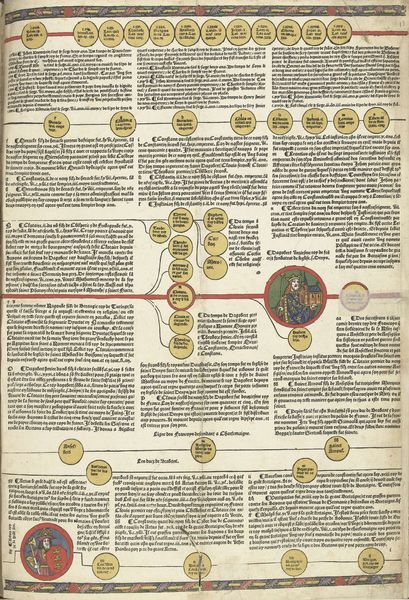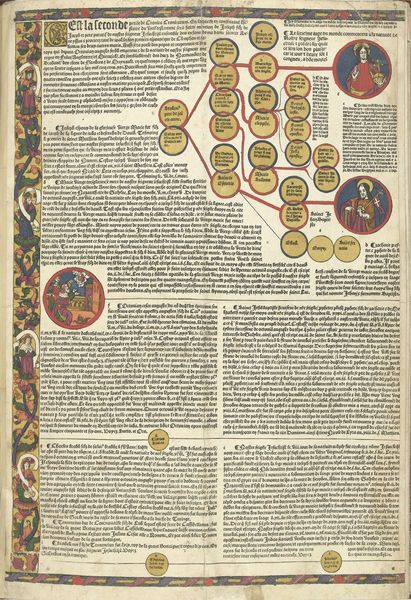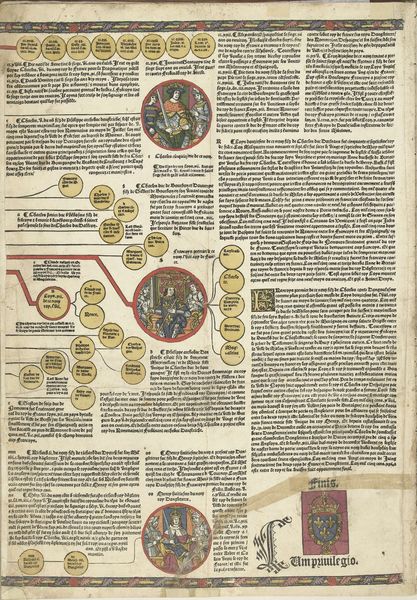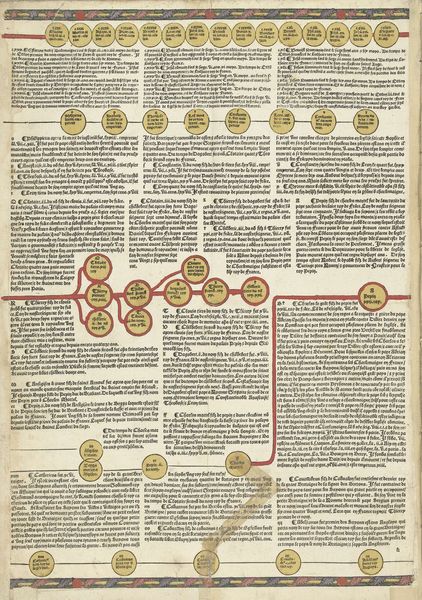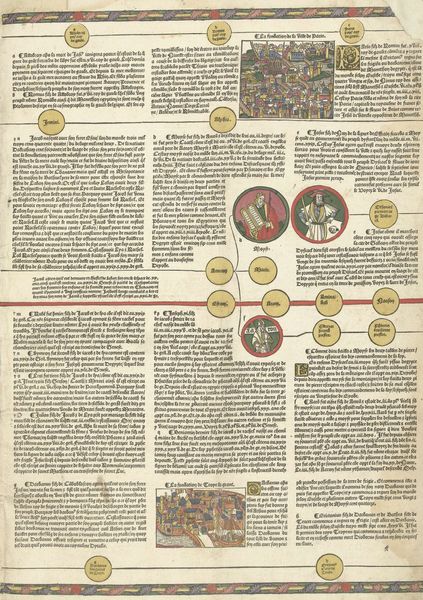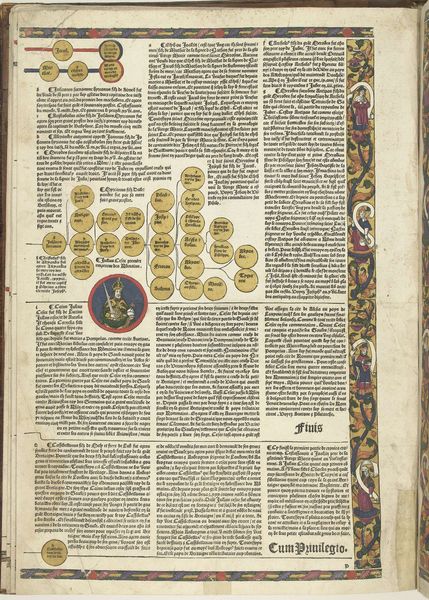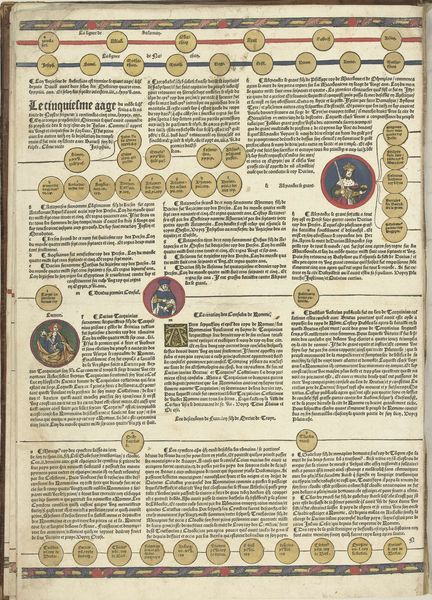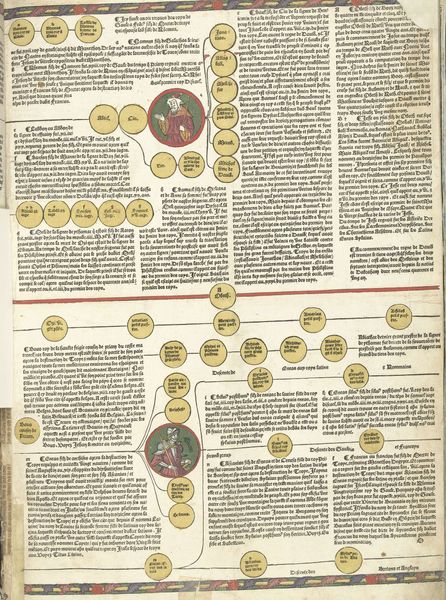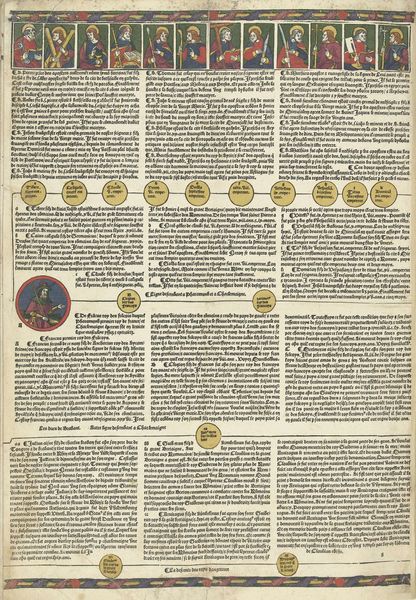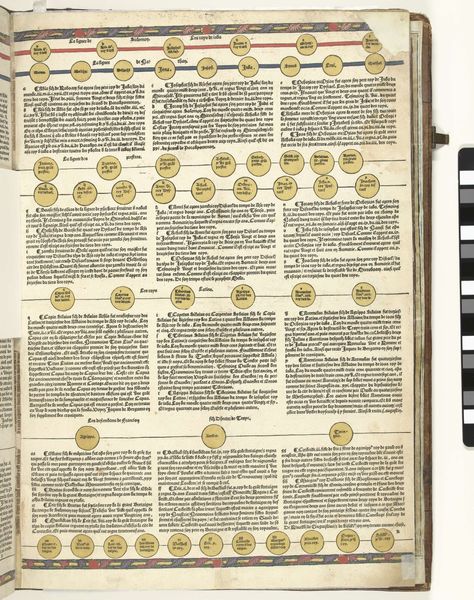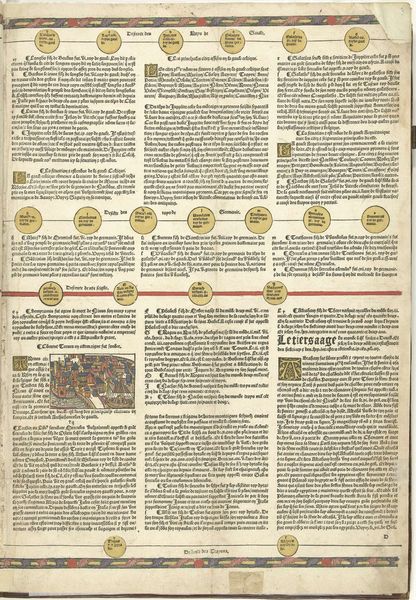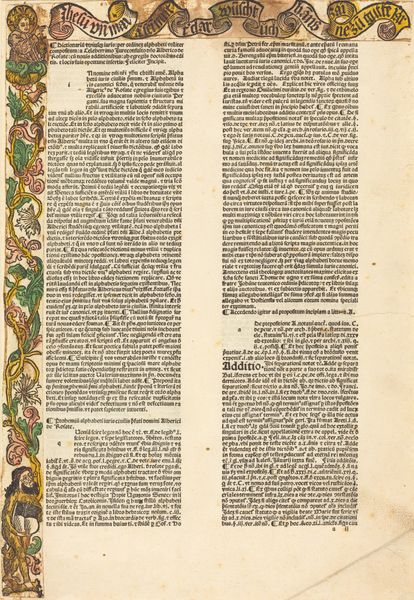
print, paper
#
medieval
#
narrative-art
# print
#
paper
#
geometric
#
line
#
history-painting
#
calligraphy
Dimensions: height 550 mm, width 380 mm
Copyright: Rijks Museum: Open Domain
Editor: This intricate print, "Cronica Cronicarum (...), blad 14 recto," dates back to possibly 1521-1529, a piece created anonymously on paper. It's quite dense, almost like a family tree made up of shapes and text blocks. What's your reading of the composition? Curator: Precisely. The visual field is meticulously organised, creating a structural hierarchy. Note how the linear arrangement, punctuated by circular forms, functions as a visual syntax. The calligraphic text is carefully integrated with geometric shapes. Editor: The lines connecting the circles, do they work as sentences linking ideas? Curator: Indeed, those connecting lines, one could say, behave as conduits between signifiers. Their varying thickness and curvature alter the pace of the composition. This changes how one reads the surface, doesn't it? What sort of movement does it create for you? Editor: There is an undeniable forward direction. It definitely guides my eyes downwards across the page. The two portraits break that sense of motion slightly. Curator: They establish visual anchors, hierarchical nodes within the linear flow. They function as dominant signs which redirect the gaze to different formal qualities, creating a dialogue within the composition itself. What’s your understanding of this structural strategy? Editor: I appreciate your perspective. Focusing on its form enhances how I interpret it, seeing beyond the narrative. I initially viewed it simply as a timeline. Now I consider the geometric forms as symbols. Curator: Precisely. The focus on visual structure allows us to investigate systems of knowledge as reflected in art.
Comments
No comments
Be the first to comment and join the conversation on the ultimate creative platform.
